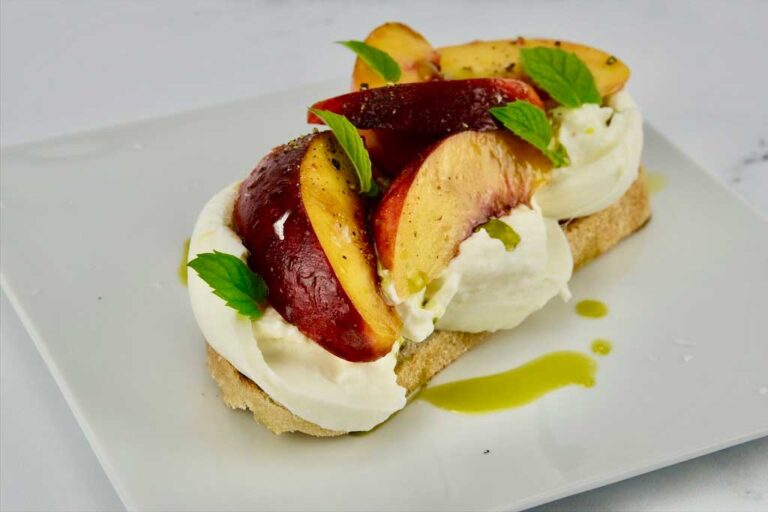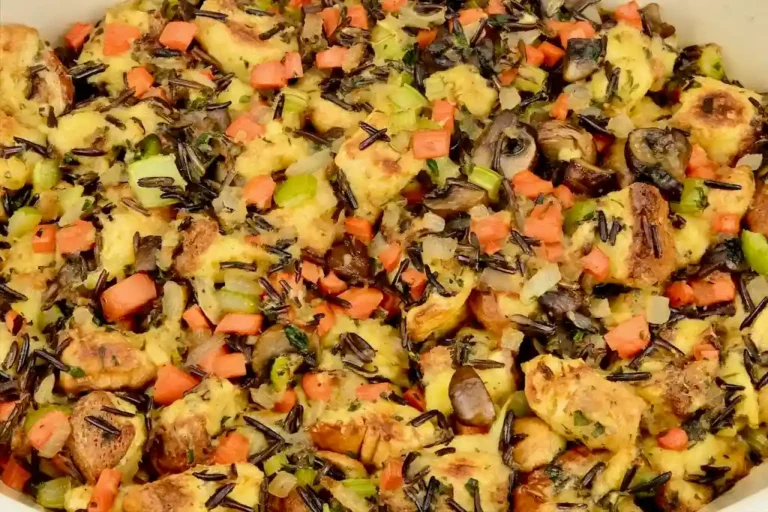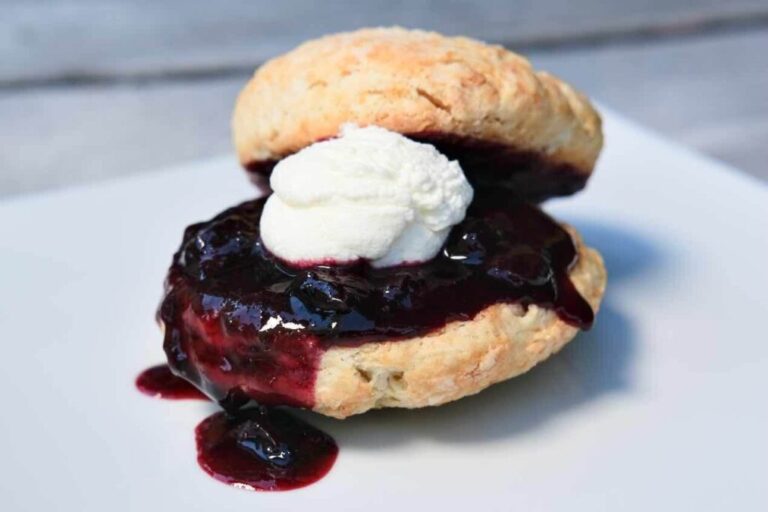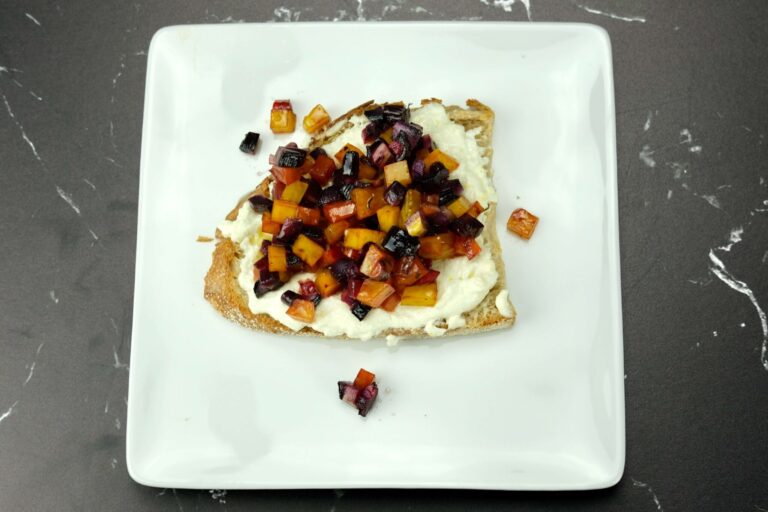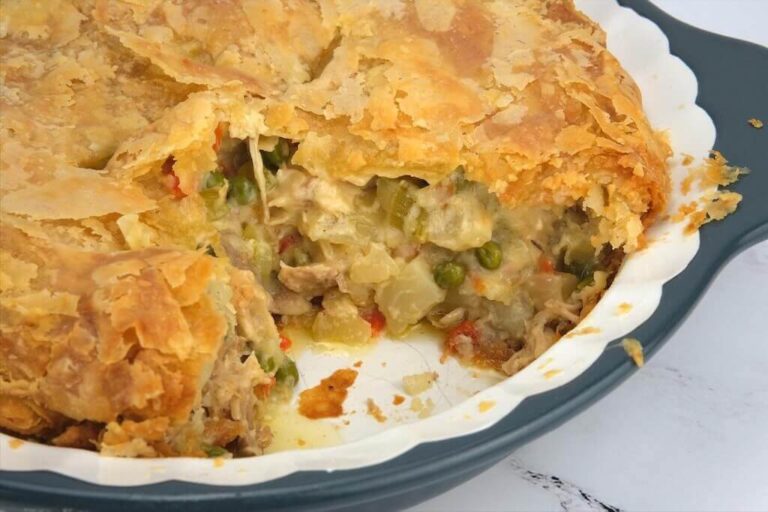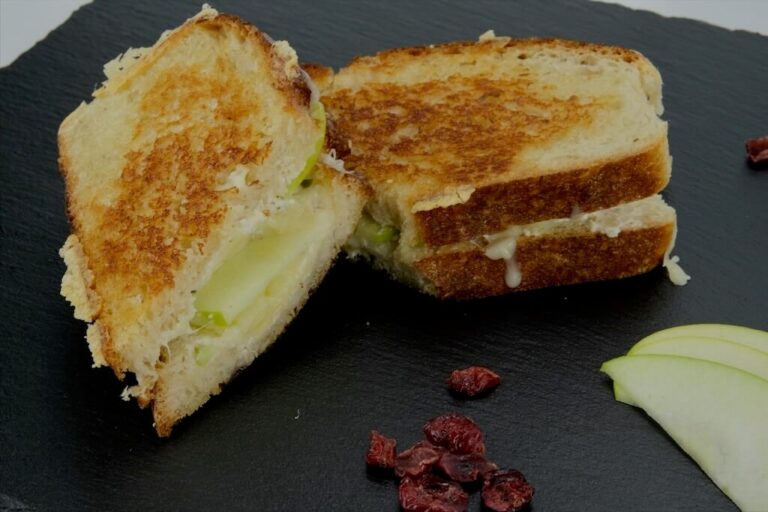You Can Make a Soufflé
About this Recipe
By: Rachel
Soufflés are magical. The experience of eating a good one is unforgettable, like biting into a flavorful, delicious cloud. Anytime they are seen on a restaurant menu—usually for dessert, in the form of chocolate—patrons gasp in delight.
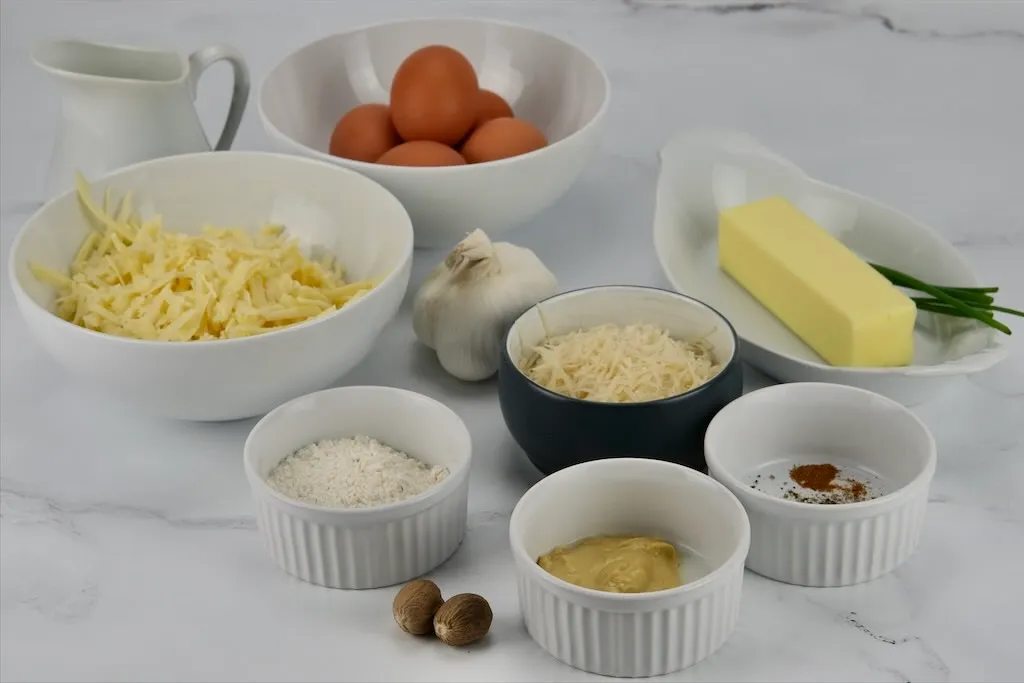
We have to order that, diners often insist, because soufflés are so rare and special, so difficult to make—requiring years of specialized training under the auspices of a trained French chef—that they may never be so lucky as to see a soufflé offered on a menu ever, ever again.
The prepared dish certainly looks impressive, rising mile-high and wobbling precariously above the edges of its mold, as though the whole thing might collapse at any moment. It tends to elicit oohs and ahhs when it finally appears at the table, often with an accompanying bit of sauce that the server will pour into the prepared soufflé, tableside, with a flourish. It is a fun and memorable moment of drama.
It is true that soufflés don’t often appear on restaurant menus, but not because they are difficult to make—rather, because they are tricky to time. Each one must be made exactly to order. The preparation cannot be rushed, nor can the soufflé wait an extra minute once it emerges from the oven. If you have seen soufflés offered on a menu, you may also have seen a note along the lines of, “Please allow 20 extra minutes for preparation.” Restaurants often need to turn tables quickly, and soufflés tend to slow things down.
Soufflés are actually quite easy to prepare, and require very little in the way of prep time. You must simply be sure to follow the steps and be aware of a few common pitfalls. Soon, you will be preparing a variety of perfect soufflés to your awed and appreciative guests.
Are you ready? Below, find some tips to help make sure your soufflés turn out perfectly, then read on to find recipes for both a Savory Cheese & Herb Soufflé and a Chocolate Soufflé with Grand Marnier Crème Anglaise Sauce. Let’s get started!
What to Know About Soufflés:
- Quality of ingredients: Use the best ingredients available. Soufflés are simple and delicate; to shine, they need great ingredients. In particular, avoid low-quality chocolate and processed cheeses, which may contain ingredients that will adversely affect the final product.
- Baking dishes: Soufflé molds (ceramic ramekins made for this purpose) are ideal, since they are deep with high sides to support the soufflé as it rises. Other ramekins, or even a Dutch oven, may be substituted. Prepare molds by coating the interior liberally with softened butter, then adding an additional layer of dry ingredients: finely-grated cheese (for savory soufflés) or fine granulated sugar (for sweet soufflés). This will allow the soufflé to rise properly, without sticking to the sides of the mold.
- Preparing the egg whites: Soufflés rely on stiffly whipped egg whites for their signature texture and height. If the egg whites encounter even a tiny bit of fat, they will not reach the proper consistency.
- Therefore, make absolutely sure that your bowl and beater are completely clean and completely dry. Separate your eggs as follows: break your eggs, tipping the yolk into one bowl and the white into another. As you finish cracking each egg, pour the separated white into your mixing bowl, one at a time. That way, if you accidentally break a yolk, you can reserve that egg for another purpose rather than spoiling your entire batch of egg whites with one broken yolk.
- When properly prepared, the egg whites should be thick and glossy, and will form lasting stiff peaks when the beater is removed. When underdone, they will not form peaks, or the peaks will sink quickly back down into the whites; when overdone, the eggs will be very dry and foamy, like cappuccino foam or bubble bath.
- Preparing the base: You will prepare a flavorful base on the stovetop before gently folding in the whites. Set this base aside to cool in the refrigerator while you prepare the whites, lest the heat deflate your whipped egg whites.
- Soufflé texture/doneness: The ideal texture of a souffé is light and fluffy throughout, with a pleasantly runny center. This is called the baveuse. If you have ever had a properly prepared French omelette, which has a deliciously creamy interior, you know what the baveuse is. Underdone soufflés will have goopy, wet, overly-runny centers; a bit like chocolate lava cake. Overdone soufflés are completely dry throughout, and typically, over-browned on top. Perfect soufflés have just a teaspoon or so of pleasant creaminess at the center.
- Experimenting with the recipe: Once you understand the basic steps and are comfortable making these soufflés as directed, you can experiment with your own flavors and ingredients. However, it is advisable to avoid putting “heavy” items in your soufflé (nuts, for example, or cubes of meat or vegetables). This may cause your soufflé not to rise, and/or adversely affect its texture.
You Can Make a Soufflé
Ingredients
Savory Herb & Cheese Soufflé
- 1 clove garlic, crushed
- 4 tablespoons (60g) unsalted butter, plus more for greasing the molds
- ½ cup (55g) plus 2 tablespoons finely grated Parmigiano-Reggiano cheese, divided
- 4 tablespoons (36g) flour
- 2 teaspoons Dijon mustard
- ¼ teaspoon kosher saltc
- Freshly ground black pepper
- Several gratings fresh nutmeg
- ⅛ teaspoon cayenne pepper
- 1 ½ cups (350mL) whole milk, warmed
- ¾ cup (85g) Gruyère cheese, shredded
- ¾ cup (85g) Comté cheese, shredded
- ¼ cup (12g) minced chives
- 5 large eggs, separated
- ¼ teaspoon cream of tartar
Chocolate Soufflé with Grand Marnier Crème Anglaise Sauce
For the crème Anglaise sauce:
- ¾ cup (175mL) whole milk
- 1 cup (235mL) heavy cream
- 1 vanilla bean, contents scraped out with a small knife, or ½ teaspoon pure vanilla
- 5 egg yolks
- ⅓ cup (70g) sugar
- 1 tablespoon Grand Marnier, or other orange liqueur*
For the chocolate soufflé:
- 5-6 tablespoons (75-90g) softened unsalted butter, divided
- 6 tablespoons (70g) granulated sugar, dividedv
- 4 ounces (112g) high-quality bittersweet chocolate
- 2 tablespoons (15g) cocoa powder
- ⅛ teaspoon salt
- ⅛ teaspoon espresso powder
- 5 egg yolks
- 8 egg whites
- ⅛ teaspoon cream of tartar
*If you prefer not to cook with alcohol, remove a few thin strips of skin from a fresh orange, being careful to avoid the pith. Steep these in the cream mixture, and discard before refrigerating.
Step by Step Instructions
Savory Herb & Cheese Soufflés
Step 1
- Preheat your oven to 400°F (200°C); do not use the convection setting.Place 6 eight-ounce (235mL) soufflé molds or one 1 ½ quart (1400mL) soufflé mold atop a lined sheet pan.
Step 2
- Rub the crushed garlic clove over the interior of the molds. Discard the clove, or use for another purpose.Generously butter the molds, and sprinkle the interior with finely grated Parmigiano-Reggiano cheese, turning the mold upside-down and gently tapping the bottom to remove any excess cheese.
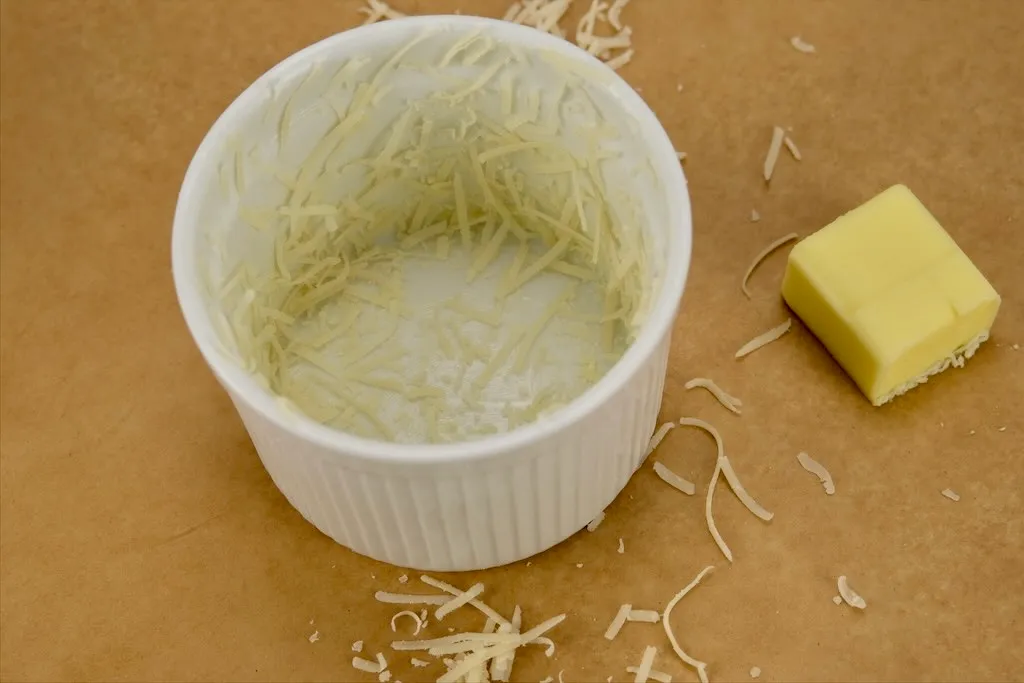
Step 3
- In a heavy saucepan, such as a Dutch oven, melt the 4 tablespoons butter over medium heat. When melted, whisk in the flour to create a roux.Season the roux by stirring in the Dijon mustard, salt, pepper, nutmeg, and cayenne pepper. Continue to cook for another minute, stirring continuously.
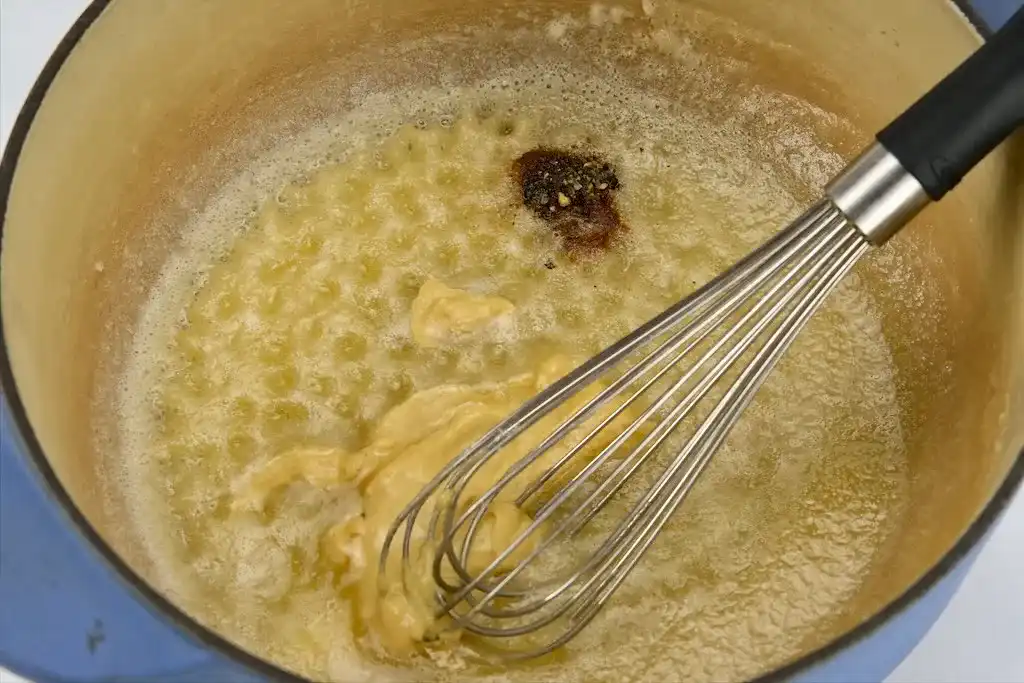
Step 4
- Slowly stir in the warm milk, whisking continuously, to create a thickened sauce.
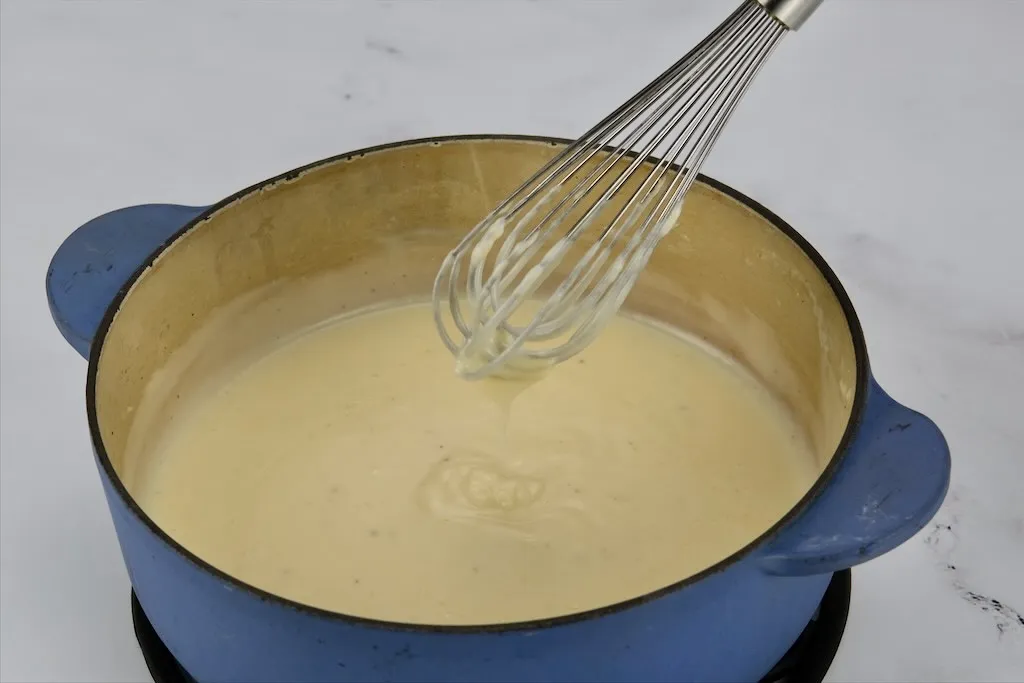
- Remove from heat, and stir in the remaining Parmigiano-Reggiano cheese along with the Gruyère, Comté, and minced chives. This is your soufflé base.
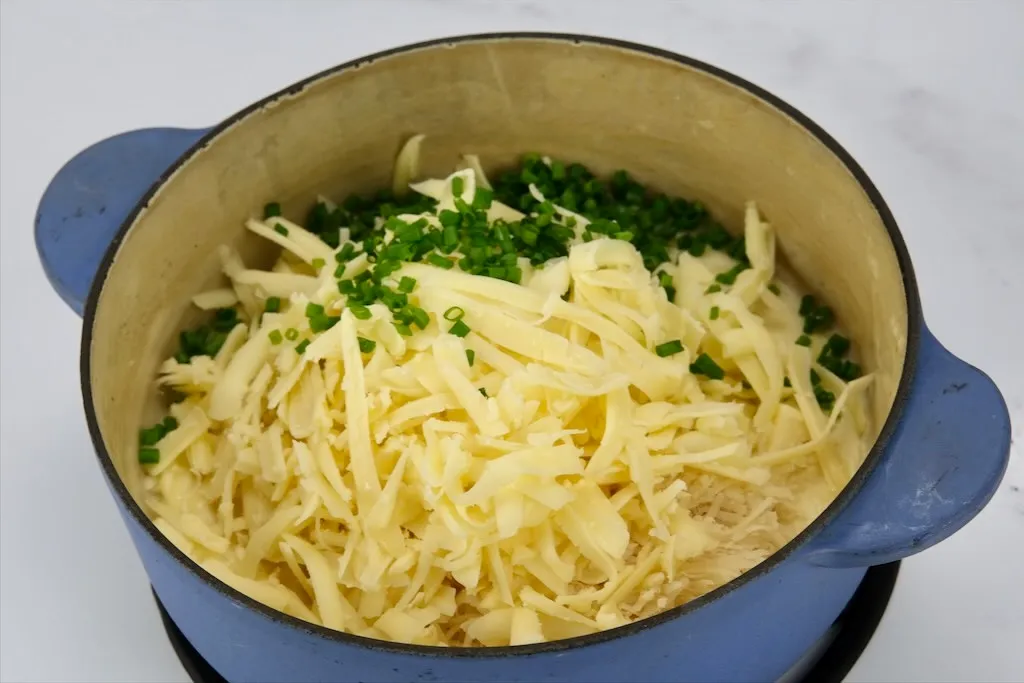
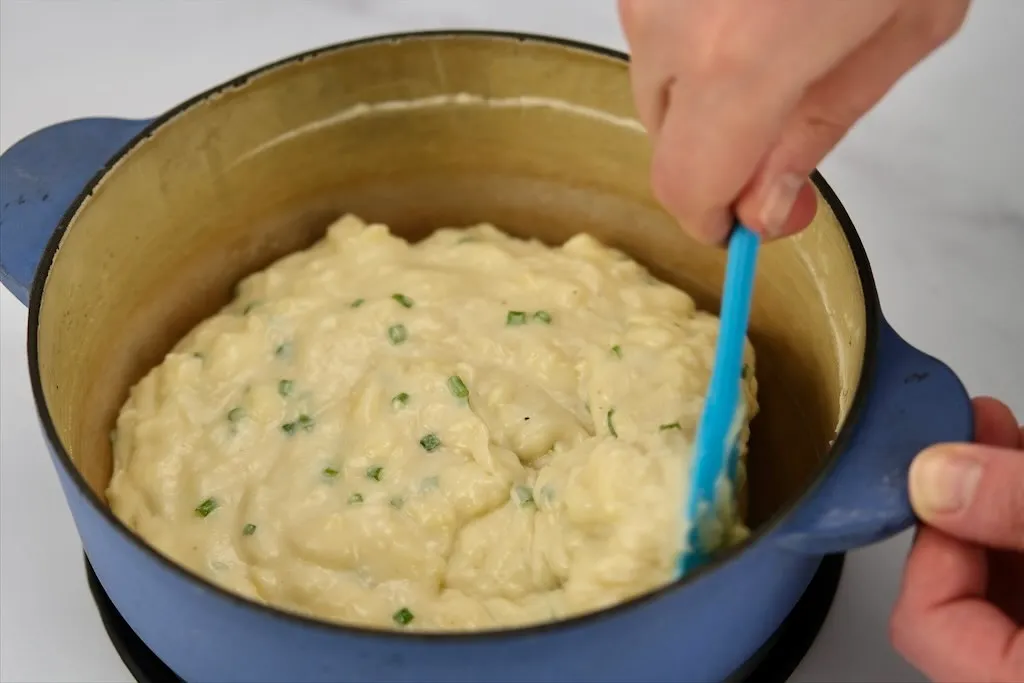
Step 5
- Add your egg yolks to a medium bowl, and have a small whisk at the ready.Add a large spoonful of the soufflé base to the egg yolks, whisking continually, to temper. Add about ½ (120mL) cup more to the egg yolk mixture, then return the mixture to the saucepan, continuing to whisk until the egg yolks are fully incorporated.Set the soufflé base in the refrigerator to chill while you move on to the next step.
Step 6
- Add the egg whites to a large, clean, mixing bowl, ideally the bowl of a stand mixer fitted with the balloon whisk attachment (a large bowl and hand mixer will do).Add the cream of tartar and beat until the egg whites are glossy and form stiff peaks when the whisk is removed.
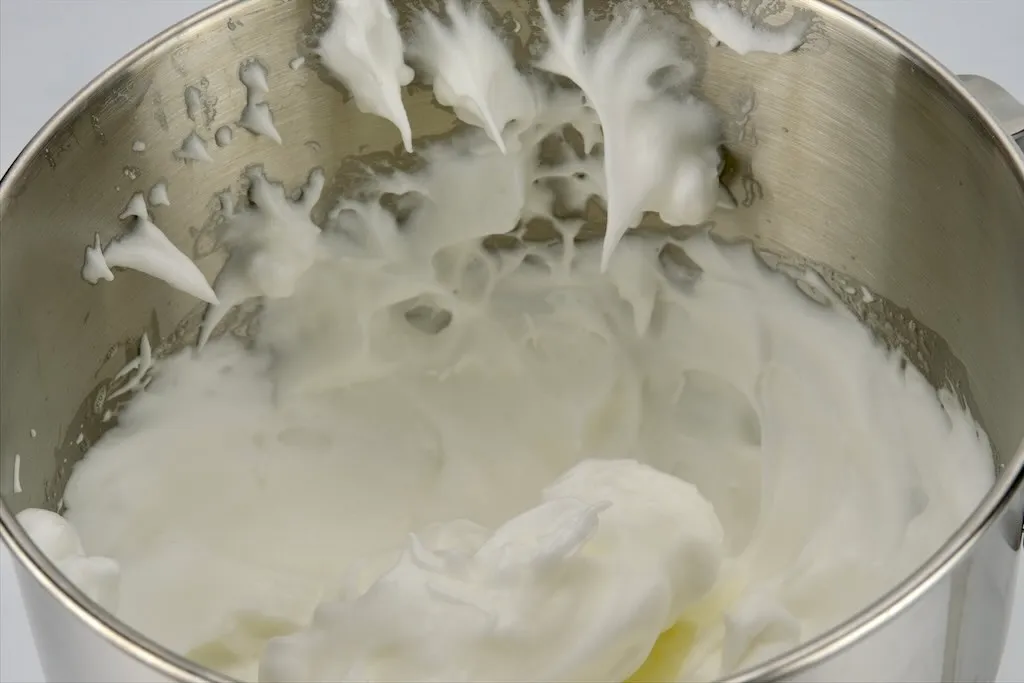
Step 7
- Remove the soufflé base from the refrigerator, and stir a few times with a rubber spatula to loosen.Gently fold one-third of the egg whites into the soufflé base to lighten, then continue to gently fold in the remaining egg whites until no white streaks remain. If the mixture is not well-combined, it will cause your soufflé to rise unevenly and crack.
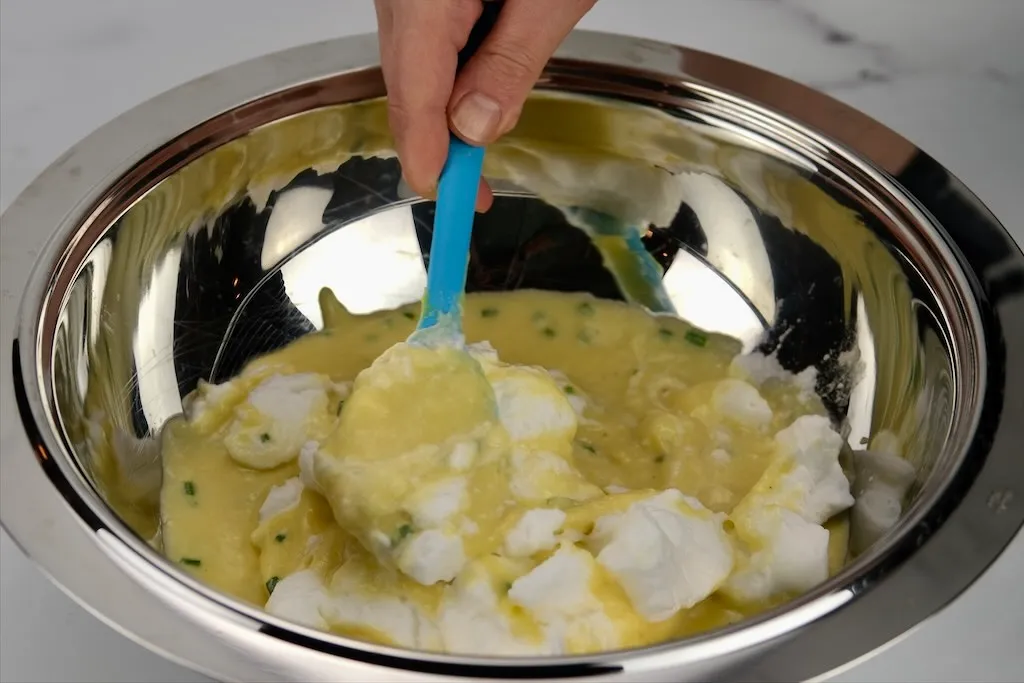
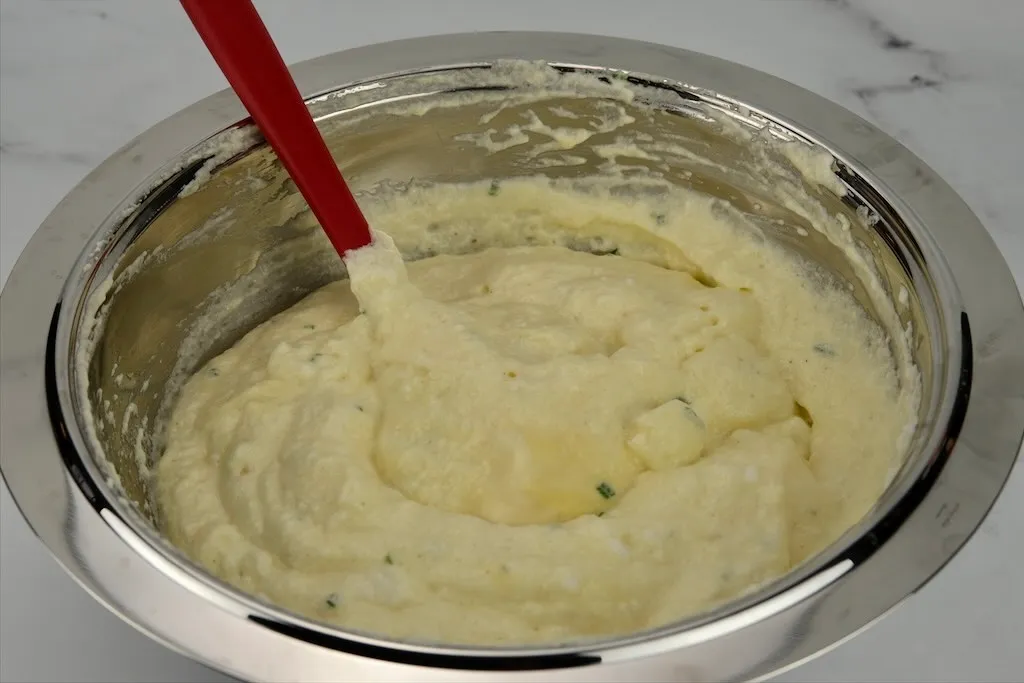
Step 8
- Scrape the mixture into the prepared molds. The mixture should reach the bottom part of the rim. Run your finger along the edge of the mixture to create a small space between it and the side of the mold. This helps the soufflé to rise well.
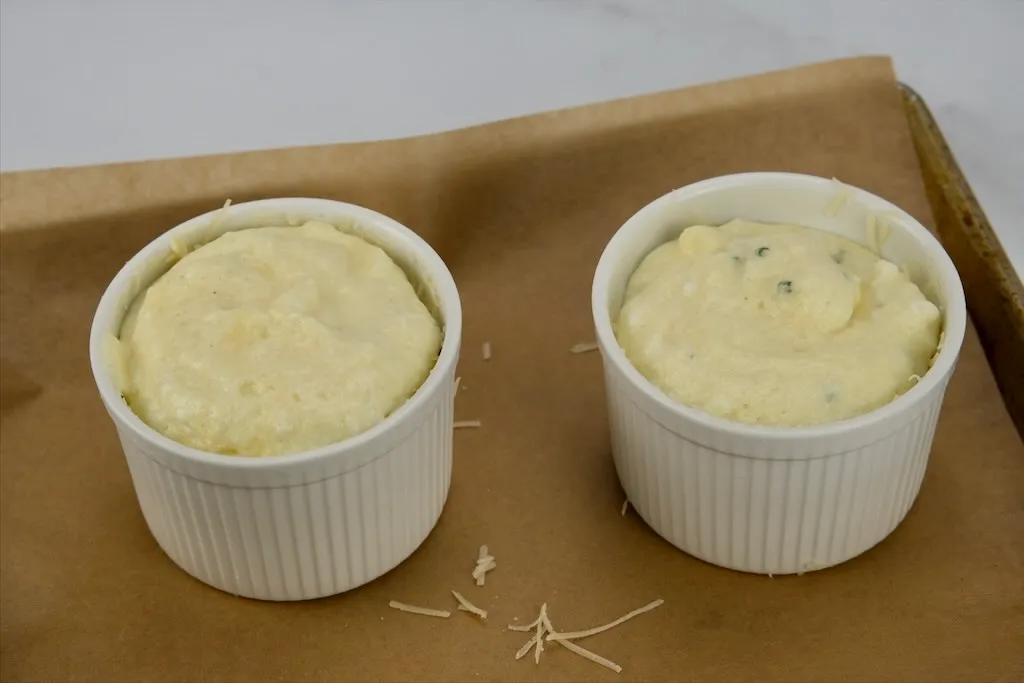
- Place the sheet pan in the middle rack of the oven, shut the door, and immediately turn the temperature down to 375°F (190°C).Do not open the oven during the cooking process. Bake for 20-25 minutes (less for small, individual molds; more for one large soufflé).
- When the soufflé has risen well above the mold of the rim, you may test it by slightly jiggling the sheet pan. The soufflés should have a very slight wobble. If you poke with the needle of a kitchen thermometer or long wooden tester, it should come out slightly wet, but not dripping with batter. If it comes out quite wet, continue to bake for another 2-3 minutes.Serve the soufflés immediately once they have been removed from the oven.
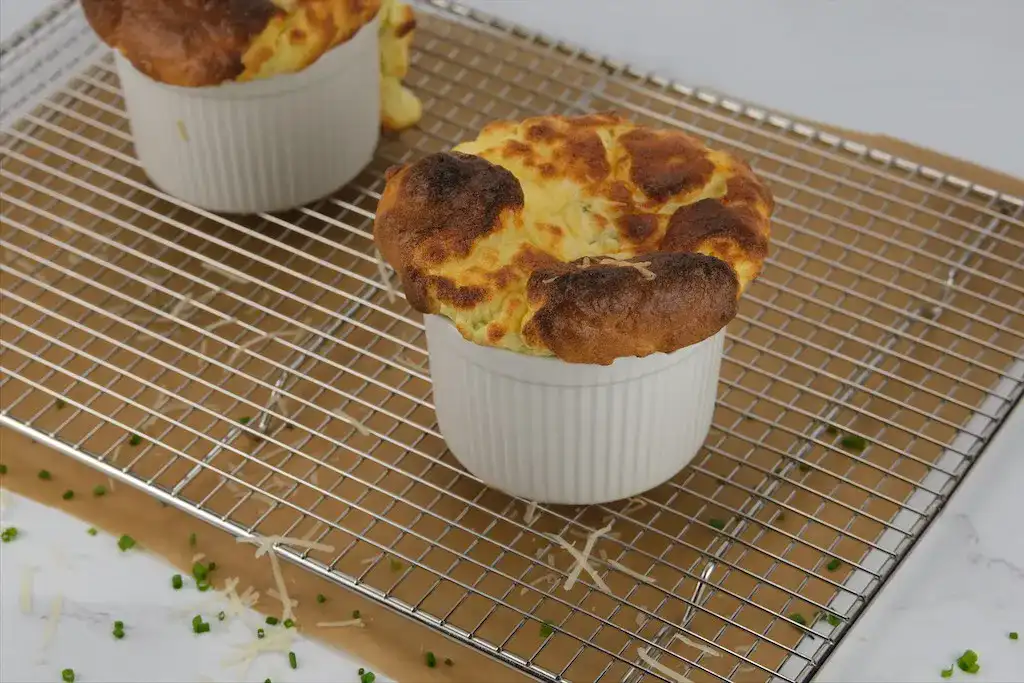
Chocolate Soufflés with Grand Marnier Crème Anglaise Sauce
Step 1
- First, make the Grand Marnier crème Anglaise sauce (if not using, skip to the next step).

- Scald the milk and cream with the vanilla in a heavy saucepan, remove from heat, and set aside.In a small bowl, whisk together the egg yolks, sugar, and liqueur or orange peel. Add about one-third cup of the scalded cream mixture into the bowl, whisking continuously, to temper. Slowly pour this mixture into the saucepan, whisking continuously, until fully incorporated with the remaining milk mixture.Heat the mixture over medium heat, continuing to whisk, until the mixture has thickened. It will thickly coat the back of a spoon when ready.

- Pour the mixture through a fine-mesh strainer into a small bowl, and allow to cool for 10 minutes, stirring occasionally. Cover with plastic wrap, and refrigerate until ready to use. The mixture should be fully chilled before using.
Step 2
- Next, proceed with making the chocolate soufflés.

- In a heavy saucepan over low heat, begin to melt the chocolate with 3 tablespoons (45g) butter, stirring periodically with a wooden spoon or rubber spatula (you may also do this in a double boiler). Watch carefully to ensure that the chocolate does not burn.While waiting for the chocolate to melt, preheat your oven to 400°F (200°C). Do not use the convection setting. Place 6 eight-ounce (235mL) soufflé molds or one 1 ½ quart (1400mL) soufflé mold atop a lined sheet pan.Generously butter the molds with 2-3 tablespoons unsalted butter, and sprinkle the interior with granulated sugar. Turn each mold upside down and tap gently to remove any excess sugar, and return to the sheet pan.

Step 3
- Once the chocolate and butter have melted, whisk in the cocoa powder, salt, and espresso powder, being sure to break up any lumps, and remove from the heat.

Step 4
- Whisk the egg yolks together in a small bowl and, whisking continuously, add a large spoonful of the chocolate mixture to temper until well-combined. Return the yolk mixture to the remaining chocolate mixture in the saucepan, continuing to whisk.Set this mixture in the refrigerator to cool for a few moments while you move on to the next step.
Step 5
- Add the egg whites to a large, clean, mixing bowl, ideally the bowl of a stand mixer fitted with the balloon whisk attachment (a large bowl and hand mixer will do). Add the cream of tartar, and beat until soft peaks form. While continuing to beat, add the remaining sugar and beat until the egg whites are glossy and form stiff peaks when the whisk is removed.

Step 6
- Remove the chocolate mixture from the refrigerator, and stir a few times with a rubber spatula to loosen. Gently fold one-third of the egg whites into the soufflé base to lighten, then continue to gently fold in the remaining egg whites until no white streaks remain. If the mixture is not well-combined, it will cause your soufflé to rise unevenly.
Step 7
- Scrape the mixture into the prepared ramekins. The mixture should almost reach the bottom part of the rim. Run your finger along the edge of the soufflés to create a small gap between the mixture and the edge of the mold, which will help the soufflés to rise well.Place the soufflés in the middle rack of the oven, shut the door, and immediately turn the temperature down to 375°F (190°C). Do not open the oven during the cooking process. Bake for 12-14 minutes (less for small, individual molds; more for one large soufflé).

Step 8
- While the soufflé is baking, transfer the cold crème anglaise sauce into a small pitcher (a coffee creamer pitcher is ideal) and place it at the serving table.When the soufflé has risen well above the mold of the rim, you may test it by slightly jiggling the sheet pan. The soufflés should have a very slight wobble. If you poke with the needle of a kitchen thermometer or long wooden tester, it should come out slightly wet, but not dripping with batter. If it comes out quite wet, continue to bake for another 2-3 minutes.

Step 9
- Bring the soufflés to the serving table immediately once they have been removed from the oven. Dramatically pierce the soufflé with a knife, tearing a large, deep slit into its center, and pour in the accompanying sauce, to the delight of your lucky guests.


